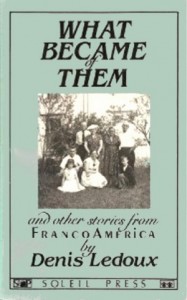You have written your memoir and you sense that independent publication is your best route. Now you ask, “Where can I find the information I need to make a best decision about how to self-publish a memoir? How does my manuscript go from computer document to a hard-copy book?”
Holding your book in hand is a natural outcome of writing a memoir. How could you possibly be faulted for wanting a hard copy of your story—a hard copy to admire, to pass out to family and friends, to sell to an appreciative audience?
At the same time, you realize that your memoir is not likely to sell in the tens of thousands. It is a good book and it will appeal to its audience, but you have no illusions about the tens of thousands of copies going out into the world.
To self-publish a memoir is probably your best option
But, you’ve never published before and you are a bit diffident about undertaking such a big project.
When you choose to self-publish, you are the publishing company. A good analogy is to think of yourself as the general contractor. We are your book packagers. We have done every step of the process, and we can take your hand and lead you to a successful completion.
Before you contemplate self-publishing a memoir, you should have it professionally edited and proofread.
The first part of the process of transition from manuscript to book is called “pre-publication” and the second step is “printing.” The whole process adds up to “publication.” The book publication information below—drawn form our years of working with writers, probably very much like you, to publish independently—will help you with your own process of self-publishing a memoir.
When you can ask us to be your publication desk, you can be assured that you will receive a quality book you will be proud of.
Book production info for your self-publication start
Read the articles below. Almost to a one, they point to the self-publication route.
We think the book publication information they offer will convince you to take your memoir from manuscript stage to printed book—via the self-publication process. Then…
If you want help in the process beyond this “mini-course” of posts on how to self-publish a memoir—either for parts or for the whole, we can assist you in any way that works for you. Call us at 207-353-5454 or email us at [email protected] and schedule a free consultation for the assistance that will best meet your needs. And…
Keep writing. No book publication happens until you have a book to publish.

Showing up for my memoir– again!
DL: This is a reprint of a post that appeared in September of 2022. It strikes me as pertinent for many readers of The Lifewriter’s Digest. The final publication of French Boy took another year. I republish this both to present a proven process and to own that I have my challenges, too. I’m not […]

Better Self-Editing: 3 Easy Techniques
In today’s post, we look deeply into 3 techniques for better self-editing—obviously there are many more but these three are a start for a short post.
I have been a memoir editor since 1990. In that time, I have worked with hundreds and perhaps thousands of memoir manuscripts.
A few manuscripts have come to me requiring only slight tweaking. The texts are clear, coherent and concise. They are nearly ready for publication. Their authors have created an interesting and well-crafted piece of writing. They have clearly mastered better self-editing.
Too many other manuscripts, however, have come to me at a stage that reflects tired or exasperated writers. They seem to be saying I’m-ready-to-have-this-writing-over-with!
The challenge of self-editing
[Free Membership required to read more. See below. ]
We'd love to have you access this content. It's in our members-only area, but you're in luck: becoming a member is easy and it's free.
Already a Member?
Not a Member Yet?

9 Tips for Self-Publishing a Memoir
Can you master these 9 for self-publishing a memoir? If so, you are on your way to succeeding.
1) Do you want to reach a larger audience than family and friends?
If so, you will need to write a book that will appeal to that larger audience. Your book must contain history and psychology and references to social concerns to appeal to a larger readership which knows neither you nor your family and friends
Simply said, the reader drawn from a larger audience does not care about you. This reader cares about how you embodied a certain category of people, and how you were representative of a certain grouping of the population.
Explore how you were universal in your particular responses to life.
[Free Membership required to read more. See below. ]
We'd love to have you access this content. It's in our members-only area, but you're in luck: becoming a member is easy and it's free.
Already a Member?
Not a Member Yet?

Self-Publishing Means Extroversion!
I am committed to independent publishing—even if self-publishing means extroversion . Ever since I realized two things, this has been my mode of publication.
This is what I understood many years ago
- I have a much more solid and true sense of my audience than any publisher could have. (My first book, a collection of short stories—What Became of Them and Other Stories from Franco-America—outsold what I had read was the average sale of a collection published by a NYC publisher.)
- One day, I heard this statement: “No matter how much you pay for child care, no one will ever wipe your baby’s tush with as much love and care as you do.” I realized that was true of my book. No one would take as much care of my books as I would.
So, why am I feeling some sort of hesitation?
[Free Membership required to read more. See below. ]
We'd love to have you access this content. It's in our members-only area, but you're in luck: becoming a member is easy and it's free.
Already a Member?
Not a Member Yet?

How I Launched Myself Publicly in the Creative Life: I Publish a Book
Editor: This post on how I Iearned to support myself in the creative life by deciding to publish a book first appeared in February 2014 at a time when covid as not part of our lives. It advocates marketing that I undertook in pre-covid days but which I believe will soon be available and viable again.
I believe that implicit in every publication is access to an audience. Whether you hope to support yourself or to merely attract a more substantial audience, this post—written about a time half a life ago—has something for you.
—
“Is it possible to find readers who will support me in the creative life?” I wanted to know.
One day on 1988, I stood in front of a door, on the other side of which was a group of Foster Grandparents. I had in hand a copy of my book of autobiographical short stories, What Became of Them and Other Stories from Franco-America, which my wife Martha Blowen and I had published through my brand-new imprint, Soleil Press. Soleil means sun in French and Martha who was a paper maker called her studio Moon Papers. So Soleil Press and Moon Papers seemed to us a great combo for a couple (hovering on both sides of 40) who were seeking to live a creative life. [Free Membership required to read more. See below. ]
We'd love to have you access this content. It's in our members-only area, but you're in luck: becoming a member is easy and it's free.
Already a Member?
Not a Member Yet?

Photos in Your Memoir Layout
Where you place photos in your memoir layout is important.
While it may seem obvious, it bears repeating that where you place photos in your memoir layout is important.
It will influence how readers appreciate your story. The only way I can grasp that makes sense is to place photos chronologically within the text. Why?
A bit of book-writing talk
There is in reading and writing a phenomenon called “suspension of disbelief.” If I as the reader am constantly saying “This is only a book. This isn’t really happening as I read,” then it is impossible for that reader to get “lost in the story.”
On the other hand, if the reader agrees not to challenge the story—to make as if the story is actually happening as s/he is reading—then there is a good chance the reader will enter the story and experience it as if it were unfolding before his/her eyes.
Now the reader is only one partner of the agreement. The other partner is the writer. The writer MUST NOT do anything that forces the reader to suspend disbelief.
A famous gaffe [Free Membership required to read more. See below. ]
We'd love to have you access this content. It's in our members-only area, but you're in luck: becoming a member is easy and it's free.
Already a Member?
Not a Member Yet?

Cindy Doucette’s Memoir Has A Powerful Impact.
Cindy Doucette (Berwick Maine) has seen her poignant story depicted in It Can Happen To Any Family used by the juvenile correctional system of York County, Maine, to effect turn arounds in young people. Below is a testimonial written by a young person who was in the correctional system and who is testifying to the […]

My first publication story: independent publishing
Let me share the independent publication story of my first book, What Became of Them. It is a collection of short stories that I had written over a number of years in the 1980s. In 1987, I decided it was time to send the collection out into the world, but I was not ready yet to do independent publishing.
Taking stock of myself, I knew I had no need to be approved by someone, to have my writing found to be worthy. I know many writers want to have a “real book,” and by this, they probably mean they want their book to be canonized by someone—the larger the reputation and the more famous, the better.
This sort of approval was not important to me. I was looking for a way to reach my audience which I knew both existed and would want my book.
I also wanted to earn some income from my writing. I understood that my income would come both from sales of the book and from speaking and teaching from the podium my book would allow me to step up on.
Where to send my manuscript?
I gleaned names and addresses I researched in the library and bookstore. After selecting a few of the more promising—they championed topics which I thought would attract my audience and encompassed a territory where my audience lived.
I sent the book out—and then I waited and waited.
I totally understood how a book has to fit into a publisher’s catalog. (A fruit distributor doesn’t, after all, take on a chicken farmer as a client!) A new book must support the company’s mission and complement books that have already been successful.
In addition, a book must promise to earn the company some income (preferably a large one) from its audience.
A losing proposition
[Free Membership required to read more. See below. ]
We'd love to have you access this content. It's in our members-only area, but you're in luck: becoming a member is easy and it's free.
Already a Member?
Not a Member Yet?

Book Publishing Tips: Better Book Production is Possible
Note: This is the 4th article in a series of 4 on the writing process of A Sugary Frosting published in 2016. It is full of book publishing tips. I hope you enjoy it.
Post 1: I Finish A Sugary Frosting: Notes on the Memoir Writing Process
Post 2: Mechanics of Writing a Memoir: It’s not all Inspiration
Post 3: Preparing for A Successful Book Launch
Post 4: Book Publishing Tips: Better Book Production is Possible
Here are a few book publishing tips to prepare for better book production that I learned from publishing A Sugary Frosting / A Memoir of a Girlhood Spent in a Parsonage.
My book, A Sugary Frosting / A Memoir of a Girlhood Spent in a Parsonage, made its way to publication. To launch it, as many readers know, I created an advanced reader community and was able to gather 90+ people who volunteered to write a review for Amazon in exchange for a heartfelt thank you from me, and upon sending me a copy of the published review, a link to the finished e-version, a hard copy and a $50 voucher in The Memoir Network’s e-bookstore.
The response from readers had been gratuitously generous. I had about 90 people who agreed to review the book. I was elated! Not only were these wonderful people provided me with a review but so many offered suggestions that made the book into a better one than it was initially. I don’t only mean by sending in corrections of typos but by suggesting tweaks for the story—adding and taking out text. This experience of working with advanced readers was a tremendously positive one for me.
I offer the following review of what I learned on my way to better book production. I hope it helps you in the process of preparing a book for publication.
What have I learned? Book publishing tips…
1. I created too tight a deadline.
[Free Membership required to read more. See below. ]
